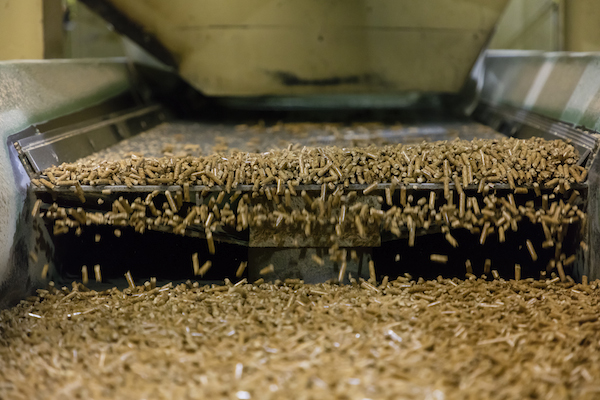
The role of wood pellets in meeting climate change goals
September 29, 2020
By WPAC
 Photo courtesy Pinnacle Renewable Energy.
Photo courtesy Pinnacle Renewable Energy. For decades, wood waste from manufacturing was burned in beehive burners and unwanted logs, branches and tops from harvesting were left on site, creating a fire and insect risk. Today, an increasing amount of that waste is being turned into wood pellets in Canada. Those pellets are used around the world to produce clean energy and to displace fossil fuels – supporting efforts to meet important global climate change targets.
Biomass, particularly wood pellets, is part of the climate change solution as we transition away from fossil fuels. The energy industry is increasingly using wood pellets to replace fossil fuels to substantially lower GHG emissions. For example, at Drax Power Station in the UK, even after accounting for fossil fuel emissions along the supply chain during harvesting, manufacturing and transportation, wood pellets lower GHG emissions by more than 80 per cent compared to coal. Power producers are not the only ones supporting energy from biomass. The United Nations Intergovernmental Panel on Climate Change (IPCC), the world’s leading authority on climate change, has recognized the significant GHG mitigation potential of biomass – as much as 80 to 90 per cent – provided that it is developed sustainably and used efficiently.
The need for sustainability is a strong argument for Canadian wood pellets. Canadian wood pellets are produced entirely from the residuals of sustainably managed forests. Those forests are highly regulated to ensure that Canada’s forests will not be depleted over time and the regulations are enforced by governments and backed by independent certification.
Why pellets?
Wood pellet manufacturers receive raw material in the form of green sawdust, chips and low-quality logs with up to 50 per cent moisture content.
Wood pellet manufacturing consists of removing moisture from incoming wood fibre, grinding the fibre into dust, and compressing the dust into the shape of a pellet. Heat causes lignin – that naturally occurs in wood – to act as a glue to hold the compressed particles together. The result is a dry, highly compressed product that can be transported efficiently for very long distances.
With electric power plants, pellets are handled the same as coal. Pellets are ground back to dust, the dust is combined with air, and the resulting mixture is fed continuously to a flame which creates steam to generate electricity.
Read the full article about the role of wood pellets in meeting climate change goals here.
Print this page